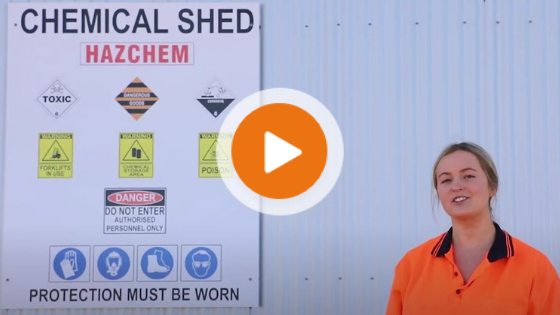Personal Protective Equipment, also known as PPE, refers to items that can be used to protect the person in the effort to reduce the risk to an individuals’ health and safety. When you think of PPE, your mind probably has visions of protective gloves and goggles compared to sunscreen, wraparound sunglasses and long pants. The PPE you use will be determined by the tasks you are carrying out and the result of any risk assessments completed.
Short video on Personal Protective Equipment – watch now
Often PPE is used to enhance control measures you already have incorporated as part of your workplace health and safety. As an employer, you must provide the appropriate PPE, including training and instructions on how, when and why it is to be used. As PPE is the last line of defence against risks to your workers, it’s important they now how to use it properly. You will need to cover how to wear the PPE, provide direction on PPE storage, reporting damaged PPE or how items should be disposed and how reusable items should be cleaned.
Other common PPE items used in farming:
- Face shield
- Ear plugs / earmuffs
- Steel capped boots and shoes
- Hard hats
- High visibility clothing
- Respirator / face mask
- Safety harness
- Sunscreen
- Wide-brimmed or legionnaire hat
When should you use personal protective equipment in agriculture?
Keeping in mind that prior to implementing PPE in your agribusiness, you need to apply higher level control measures first to minimise risks. When it comes to selecting PPE you need to ensure it is suitable for the type of work and associated hazards. If the tasks require more than just one type of PPE, make sure they are compatible, for example a task may require a hard hat as well as earmuffs.
If it isn’t worn it won’t protect
Many chemicals used in farming will specify PPE requirements on their labels. It is often recommended when handling hazardous chemicals that you use protective goggles, gloves suitable for that specific chemical handling and a chemical resistant apron. Did you know that there is not one universal type of glove for chemical handling? Different gloves offer different protective properties. In agriculture, using pesticides, herbicides and fertilizers are just a few examples of chemical hazards that could be managed with the right protection.
Since there are a number of tasks on farm that require the use of PPE, our team have created a short PPE safety video to run through some examples.
Disclaimer: Content on this website may be of relevance to users outside of Australia, but content links and examples are specific to Australia. Please check with your local authority for your country and industry requirements.











